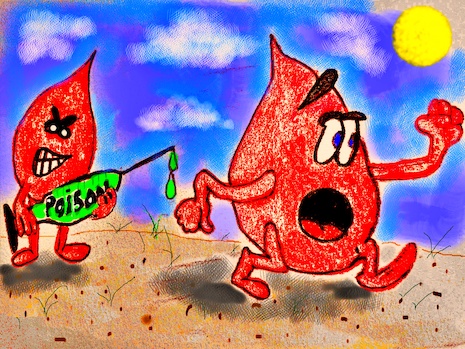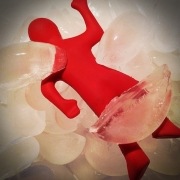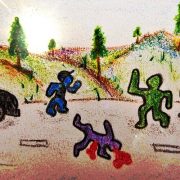Bacteria Beach: Postmortem Decomposition and the Talking Dead
During their crime-solving duties homicide investigators hear and see a lot of details—gunfire, fleeing suspects, yelling and screaming, pleas for help, blood and viscera, and even the sounds of their own hearts as they frantically beat against the inside walls of their chests.
But once the dust settles around the crime scene, and all is quiet, it’s time for detectives to focus their attention on the murder victim and what they have to “say.” Believe me, they have a quite a story to tell.
Bacteria Beach
Before we take our walk on Bacteria Beach, let’s first join an enthusiastic group of writers for a very brief introduction of the topic du jour. Please click the play button.
Now, on with Decomposition!
Putrefaction is the destruction of the soft tissue caused by two things, bacteria and enzymes. As the bacteria and enzymes do their jobs the body immediately begins to discolor and transform into liquids and gases. The odd thing about the bacteria that destroys tissue at death is that much of it has been living in the respiratory and intestinal tracts all along. Of course, if the deceased had contracted a bacterial infection prior to death, that bacteria, such as septicemia (blood poisoning), would aid in increasing the body’s decomposition.

Temperature plays an important part in decomposition. 70 degrees to 100 degrees F is the optimal range for bacteria and enzymes to do what they do best, while lower temperatures slow the process. Therefore, and obviously, a body will decompose faster during the sweltering days of summertime.
A blood-filled circulatory system acts as a super-highway for those organisms that destroy the body after death. Without blood the process of putrefaction is slowed.
- A murder victim whose body bled out will decompose at a slower rate than someone who died of natural causes.
- Bodies adorned in thick, heavy clothing (the material retains heat) decompose more rapidly than the norm. Electric blankets also speed up decomposition.
Bodies decompose faster during the sweltering days of summertime

A body that’s buried in warm soil may decompose faster than one that’s buried during the dead of winter. The type of soil that surrounds the body also has an effect on the rate of decomposition. For example, the soil in North Carolina is normally a reddish type of clay. The density of that clay can greatly retard the decomposition process because it reduces the circulation of air that’s found in a less dense, more sandy-type of earth.
Adult bodies buried in a well drained soil will become skeletonized in approximately 10 years. A child’s body in about five years.
People who were overweight at the time of their deaths decompose faster than skinny people.  People who suffered from excessive fluid build-up decompose faster than those who were dehydrated. And people with massive infections and congestive heart failure will also decompose at a more rapid rate than those without those conditions.
People who suffered from excessive fluid build-up decompose faster than those who were dehydrated. And people with massive infections and congestive heart failure will also decompose at a more rapid rate than those without those conditions.
The rule of thumb for the decomposition of a body is that, at the same temperature, 8 weeks in well-drained soil equals two weeks in the water, or one week exposed to the air.
Now, hold on to your breakfast …
The first sign of decomposition under average conditions is a greenish discoloration of the skin at the abdomen. This is apparent at 36-72 hours.
Next – Small vessels in the skin become visible (marbling).
Followed by, glistening skin, skin slippage, purplish skin, blisters, distended abdomen (after one week – caused by gases), blood-stained fluid oozing from body openings (nose, mouth, etc.), swelling of tissue and the presence of foul gaseous odor, greenish-purple face, swollen eyelids and pouting lips, swollen face, protruding tongue, hair pulls out easily, fingernails come off easily, skin from hands pulls off (gloving), body swells and appears greatly obese.
Internally, the body is decomposing and breaking down. The heart has become flabby and soft. The liver has honeycombed, and the kidneys are like wet sponges. The brain is nearly liquid, and the lungs may be a bit brittle.
Okay, I’m done for now. But before you go, here’s a reminder, from me to you …












